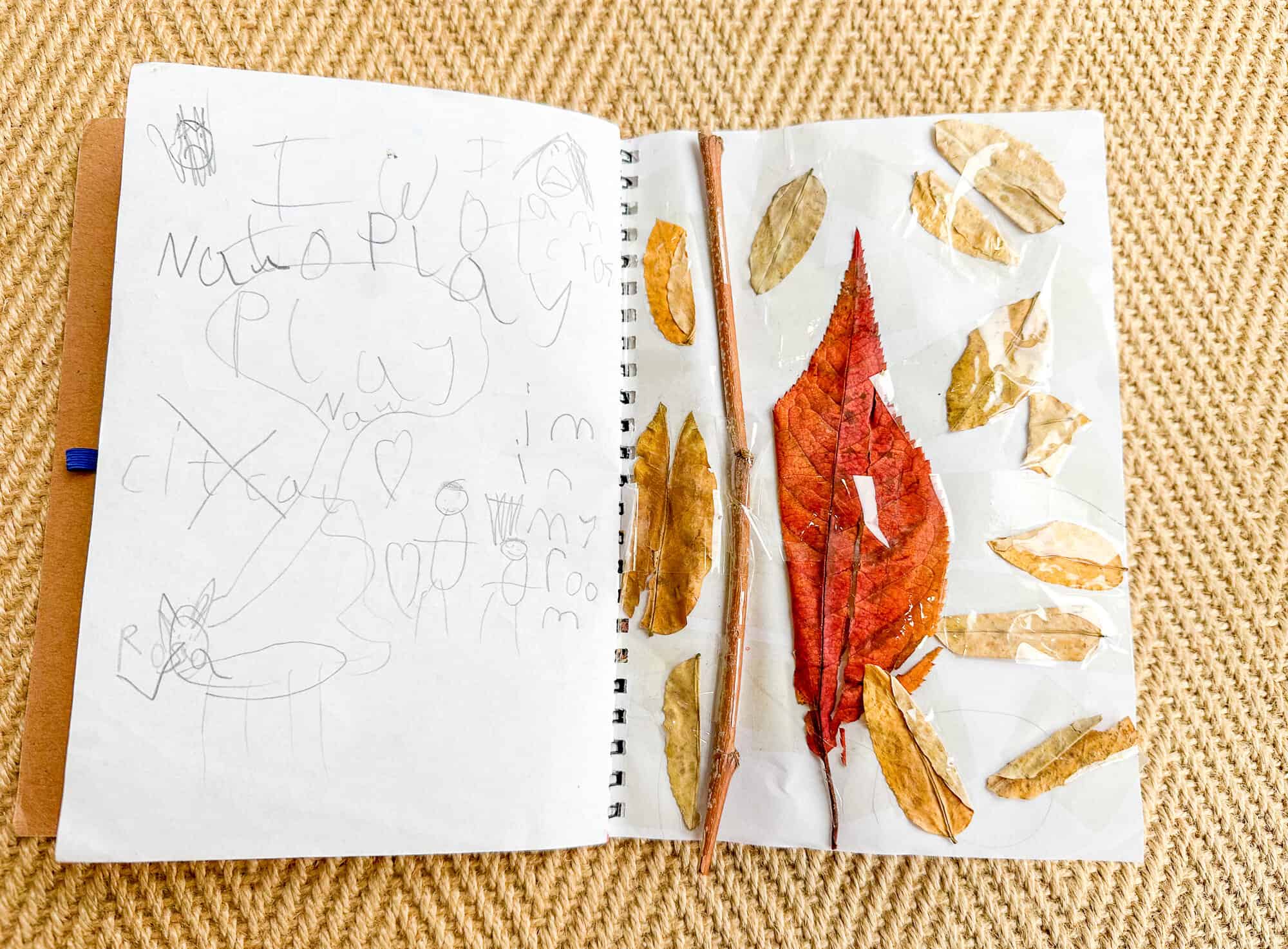Fresh pages beneath your fingertips but no idea where to start? Welcome to our guide on how to set up a travel journal.
Why Keep a Travel Journal?
There’s something timeless about keeping a travel journal. Yes, I know we live in a digital age, where we can snap a thousand photos, post stories in real-time, and even document our comings and goings automatically (guilty as charged). But stick with me for a moment – because there’s magic in pressing pause.
A travel journal can be more than just a collection of holiday snaps or a place to stash your boarding passes. It’s a deeper look at your life, one filled with the small, unpolished moments that might otherwise slip through the cracks. Sure, Instagram can show the world your perfect sunset shots but your journal can remind you how you tripped over a cobblestone and spilled tzatziki on your shirt while you were at it.
And it’s not just about the memories either – there’s something slow and satisfying about putting pen to paper in a world that’s constantly telling us to swipe, scroll, and click. Writing down your experiences forces you to pause, look around, and really take things in. It’s like experiencing travel in high-definition, and trust me, you don’t need to be a professional writer (or even remotely neat) to reap the rewards.
So if you’re ready to add an extra layer of meaning to your adventures – and maybe learn a thing or two about yourself along the way – grab a notebook, a good pen (we’ll get to that), and let’s start this journey together.
How to Set Up Your Travel Journal: What You Need to Know
Step 1: Choosing Your Journal
Ah, the all important notebook. Whether you’re a fan of crisp white pages, a vintage leather cover, or a battered and battle-worn softcover that looks like it’s just returned from a jaunt around the globe, there’s something out there for everyone.
So, how do you choose the best travel journal for you?
First off, consider your travel style. If you’re a minimalist with a penchant for efficiency, a slim, no-frills notebook will do the trick. Think Moleskine or a simple pocket-sized diary that can slip into your handbag without causing a back injury. Long journeys are a great time for scribbling in your journal pages and so it makes sense to have a journal you can fit into your hand luggage.
On the other hand, if you’re like me and have a slight obsession with stationery (I have entire shelves dedicated to my journal collection), you might opt for something with a bit more flair. A beautifully bound journal with thick, creamy pages can elevate the writing experience.
But never forget practicality. If you’re traipsing around the markets of Quito or hiking through a UNESCO Biosphere in Tenerife, you’ll want a notebook that can withstand a little wear and tear. Ideally, it should be both lightweight and durable.
Also, consider the layout. Do you prefer lined pages for neat writing or blank pages that give you the freedom to doodle, sketch, or write sideways if the mood strikes?
Personally, I like a mix – some days call for structure, while others are best suited for artistic chaos.
Finally, take a moment to think about size. If you’re heading off on a backpacking adventure, a compact journal is essential. However, if you’re embarking on a leisurely train journey through the Swiss countryside, a larger journal can be a delightful companion – ideal for expansive thoughts, sketches, and maybe even the occasional pressed flower.
In the end, choose a journal that speaks to you. There’s no right or wrong here – just your personal style. So, whether you grab that fancy leather-bound beauty or a simple, spiral-bound notepad from the local supermarket, you can’t go too far wrong as long as it doesn’t fall apart and the pages are made of good quality paper so that ink won’t soak through to the next page.
Top tip: think about whether you want pockets in your travel journal for storing important information like tickets and boarding passes.
Bullet Journal vs. Normal Journal: What’s the Difference?
A normal journal is a freeform space for expressing thoughts, experiences, and emotions without structure. You can fill it with prose, sketches, or anything that inspires you, allowing creativity to flow organically.
In contrast, a bullet journal combines traditional journaling with a structured system. Developed by Ryder Carroll, it uses bullet points and symbols to track tasks, events, and notes efficiently. A bullet journal typically features monthly and daily logs, habit trackers, and customisable spreads.
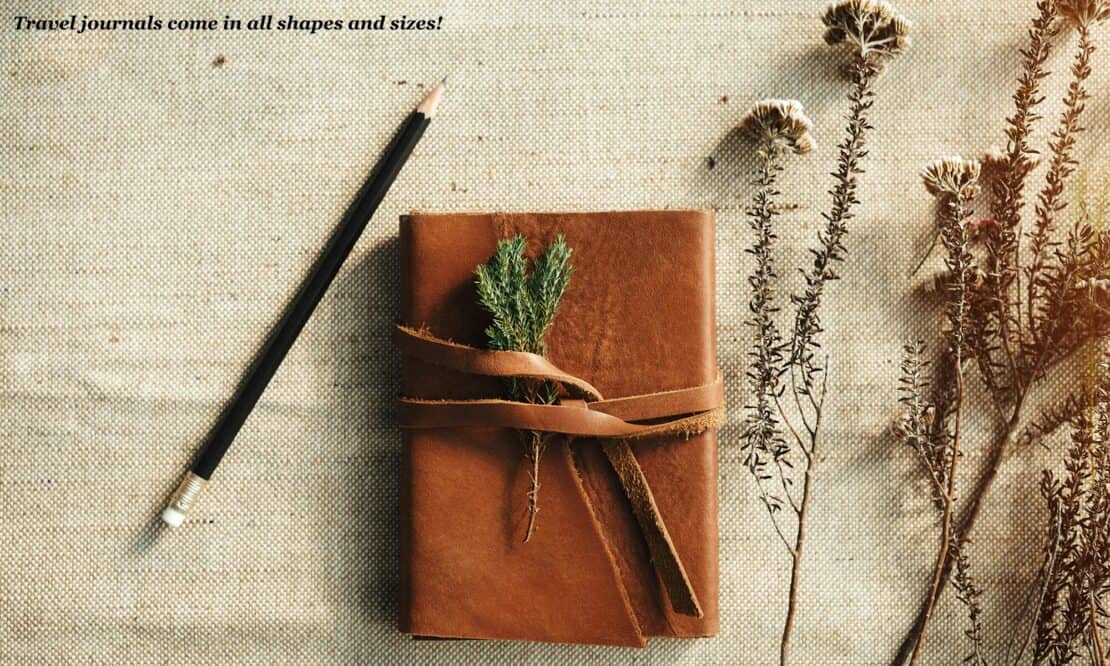
Step 2: The Perfect Pen (And Why It Matters)
Let’s face it: choosing a pen might seem like a minor detail in the grand scheme of travel journalling, but let me tell you, it’s a game changer. Not all pens are created equal, and I’ve learned this lesson the hard way.
Picture this: you’re on a bumpy bus ride in Hanoi, only to find your trusty pen sputter and leak ink all over your masterpiece.
Or you reach for your trip journal, only to discover the Serengeti sun has bleached the ink from your pages, all your travel stories gone.
When it comes to picking the right pen, you want something reliable – preferably one that won’t leave you covered in ink stains. Gel pens are my personal favourite; they glide across the page like a dream and come in a glorious array of colours. However, make sure to check if they’re quick-drying; nothing ruins a good writing session faster than smudged ink on your fresh notes.
But maybe you prefer something more classic. Fountain pens can add a touch of elegance to your writing – but they are high risk.
For the no-nonsense travellers out there, ballpoint pens are a solid choice. They’re durable, won’t dry out if you leave them in a hot car (I’ve learned this the hard way too), and you can find them nearly everywhere.
Another tip? Look for pens that are comfortable to hold, especially if you plan on writing for long stretches. A pen that feels good in your hand makes the writing experience much more enjoyable.
And let’s not forget the power of pencils! They’re light, easy to carry, and if you make a mistake (which we all do), you can just erase it. You’ll be surprised at how liberating it is to write without fear of making a mess. The snag with pencils? Sharpening them. But this issue is easily side stepped by using mechanical pencils. I use these for almost all my work now, jotting down brief descriptions, interesting conversations, flight details, the lot.
Step 3: Setting Up Your Pages (Or Embracing Chaos)
Now that you’ve chosen your journal and your pen (and possibly indulged in a brief stationery shopping spree), it’s time to think about how to set up your pages. This step can make all the difference, whether you’re a meticulous planner or a free spirit who thrives on chaos.
The Structure Dilemma: To Plan or Not to Plan?
Let’s get real: some people thrive on structure. If you’re one of them, consider creating sections in your journal. You might have a page for each day of your trip, with dedicated spots for highlights, memorable quotes, and even a little doodle to capture the day’s vibe. For instance, if you’re in Rome, one page might capture your pizza-fuelled adventures, while another holds your thoughts on the Sistine Chapel. You can even create categories like “Food Experiences,” “Cultural Highlights,” or “Near Disasters.”
However, if your brain works more like a kaleidoscope than a filing cabinet (and I rather like that comparison), embrace the delightful mess. Don’t stress about neatness; sometimes, the best stories come from the most spontaneous moments. I often start with a date at the top of a page and then let my thoughts spill out in whatever direction they choose. One page may end up filled with frantic notes about an adventure in Istanbul, while the next is an abstract doodle of a cat I saw lounging in a sunbeam. Embrace the glorious randomness!

Layout Ideas: Get Inspired!
Here’s where the fun begins. You might want to consider a few layout ideas that can inspire your creativity:
- Daily Highlights: Dedicate a section to bullet points of your day – like the breakfast you ate or the friendly chat you had with a local artisan. Quick notes are perfect for days when you’re too tired to write an essay.
- Mind Maps: If you’re feeling particularly adventurous, sketch out mind maps for places you want to visit or experiences you hope to have. It’s a fun way to brainstorm your travel dreams without worrying about straight lines!
- Lists: Who doesn’t love a good list? Write down things like “Top 5 Local Dishes to Try” or “Must-See Landmarks.” There’s something satisfying about checking things off as you go.
- Quotes & Reflections: If you come across a particularly poignant quote or have a moment of introspection, make space for it. Here are a few of my favourite travel quotes to get you started.
A Little Bit of Planning Goes a Long Way
While spontaneity is delightful, a touch of planning can help keep things in order even if you love the kaleidoscope approach. Before your trip, take a few moments to set up your journal. Leave some pages blank for the unexpected moments and adventures that are bound to come your way. Create a little “index” at the front so you can easily find sections when you want to. It’s a good idea to bring some bookmark post-it notes with you to help with this.
Have a think about whether you want to create a cover page or title page before you go, or at the end. I’ve seen some people number pages and use the back of the journal as an index. For me, I like the idea of “chapters” and leave a few pages blank ready for a postcard or photo to stick in later. I also tend to write on every other page, leaving the empty ones free for small things like plane tickets or receipts.
How Often Should You Add Journal Entries?
When it comes to travel journalling, there’s no one-size-fits-all answer to how often you should add entries. It ultimately depends on your style, the pace of your travels, and your personal preferences. However, here are a few guidelines to help you find a rhythm that works for you:
Daily Reflections
For many travellers, jotting down entries daily can be incredibly rewarding. This approach allows you to capture the details while they’re still fresh in your mind. Try setting aside a few minutes each evening to reflect on your day. You could sit in a café, your hotel room, or even a park. Even if it’s just a few bullet points about what you saw or felt, daily entries can turn into cherished memories later on.
Personally, daily logs end up stressing me out. I prefer to use my own journal my own way – and that’s as often as I can but I don’t want it to become a millstone around my neck. Which brings us to…
As Needed
If you’re on the go and find yourself in a whirlwind of activities, don’t stress about writing every day. Instead, jot down notes or snippets whenever inspiration strikes. You can keep a small notepad or use a notes app on your phone for quick thoughts, then expand on them later when you have more time. This approach keeps the pressure off while ensuring you capture the essence of your travels in each journal entry
After Significant Events
Consider adding entries after significant experiences or adventures. Did you go on an unforgettable hike? Attend a lively festival? Visit a famous landmark? Use these moments as anchor points for your journal. This way, you’ll be motivated to write about moments that truly resonate with you, allowing for deeper reflections and richer storytelling.
Check-In Days
If you’re on a longer trip, plan “check-in days” where you dedicate time to reflect on your experiences so far. These could be days when you’re travelling between destinations or relaxing in a quieter spot. Use these opportunities to write about your journey up to that point, summarising your highlights, thoughts, and any insights you’ve gained. It’s worth repeating that you do not need to enter your travel logs at the end of each day.
Trust Your Instincts
Ultimately, trust your instincts and let your journalling habits evolve naturally. Some days will be more inspiring than others, and that’s perfectly okay. The goal is to create a record of your experiences that feels authentic to you. Don’t feel compelled to write just for the sake of it – write when you feel moved to, and your entries will be all the more meaningful.
In the end, whether you write daily, weekly, or whenever inspiration strikes, the key is to enjoy the process and let your travel journal become a true reflection of your adventures. Happy journalling!
Embrace Imperfection
Lastly, remember that it doesn’t have to be perfect. You might spill coffee on a page or accidentally tear a corner. Embrace the imperfections! They’re part of the story. The best travel journals are those that reflect your authentic experiences – messy, chaotic, and full of heart.
Step 4: What to Write? The Art of Observation
Now that your journal is set up and ready to roll, the big question arises: what on earth should you actually write about? Trust me, it’s easy to stare at a blank page and feel a bit like a deer caught in headlights. But fear not! The world is bursting with inspiration, and I’m here to help you tap into the art of observation.
Need some more help with the writing side of things? Check out our online writing course here.
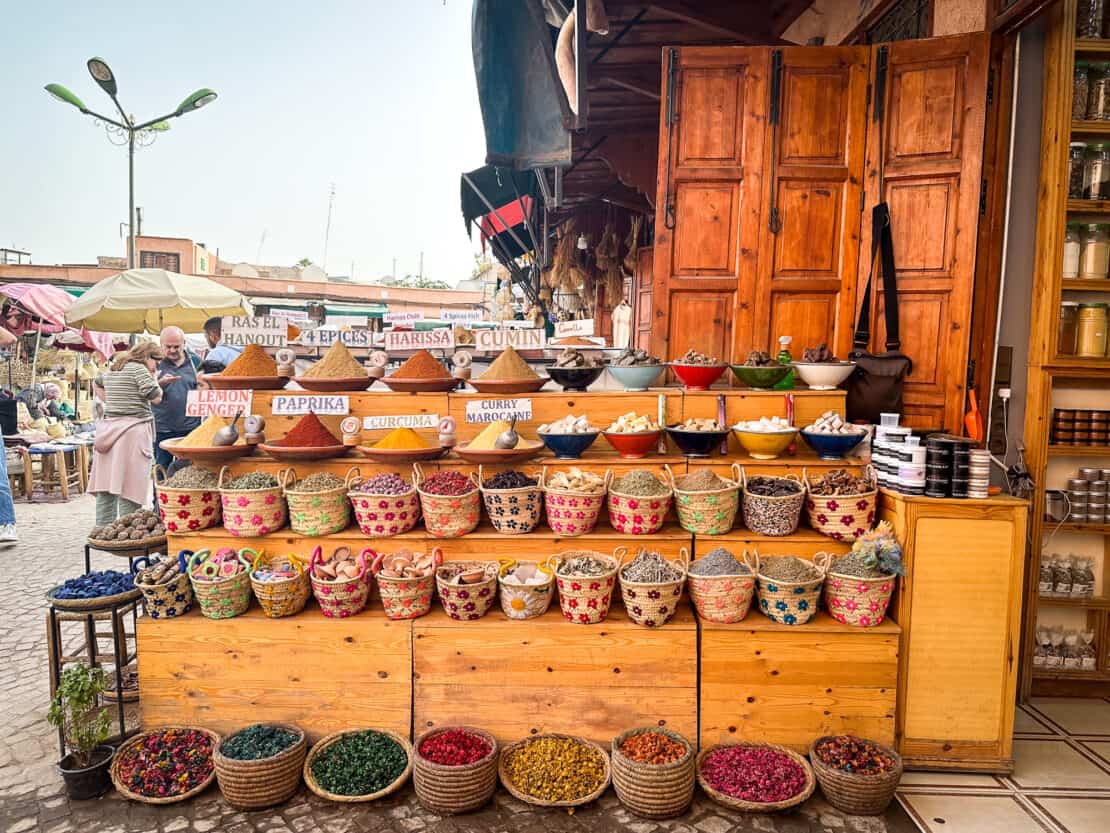
Embrace Your Surroundings
The key to filling those pages is to pay attention. Take a moment to pause, breathe, and soak in the atmosphere around you. Immerse yourself in the sensory details. What do you hear? What can you smell? What colours dance before your eyes?
For instance, during my last trip to Marrakech, I found myself sitting in a courtyard, surrounded by birds. Instead of just noting the stunning architecture, I jotted down how the warm air felt against my skin, how the spices in the air tickled my nose, and even the conversations I overheard in a mix of Arabic and French. Those tiny details are what transport you back to that moment years later.
Capture the Little Things
While it’s tempting to document the big landmarks and “must-see” attractions, don’t overlook the little moments that can make a trip truly special. Maybe it’s the friendly smile from a stranger, the quirky menu at a local diner, or the way the sun sets behind the hills at a little-known viewpoint.
Try this exercise: find a spot – any spot – and sit quietly for five minutes. Just observe. You might notice a child chasing pigeons, an elderly couple sharing a pastry, or a street performer lost in their music. Write down whatever catches your attention, even if it seems insignificant at first.
It’s Not All Sunshine and Rainbows
Let’s be real: not every moment on your journey will be picture-perfect, and that’s okay! Travel can sometimes be a glorious mess. When things go awry – missed flights, food poisoning (yep, I’ve been there), or getting hopelessly lost – write about it! These mishaps often turn into the best stories, filled with laughter (after the fact, of course).
Record Your Thoughts and Feelings
A travel journal isn’t just about the sights; it’s also a space to reflect on how you feel during your adventures. Document your thoughts, fears, and excitement – whatever you’re experiencing in that moment. Maybe you feel exhilarated while climbing to the top of a mountain or a bit anxious while navigating a new city alone. Writing about these emotions adds depth to your entries and gives future readers (including your future self) a glimpse into your mindset. We could even, dare I say it, use the term personal growth.
Leave Room for Inspiration
Finally, don’t forget to leave some space for inspiration. Jot down quotes from conversations you overhear, snippets of songs that resonate with you, or even sketches of things that catch your eye. Sometimes, the most beautiful entries are those that are less about writing and more about capturing the essence of a moment.
One of the most useful aspects of my travel journals is the to-do list of new things to try when I get home!
What About Digital Journals?
Digital travel journals offer a range of pros and cons. On the positive side, digital journals are incredibly convenient; they can be easily accessed on smartphones, tablets, or laptops, allowing for quick updates on the go. Many apps allow you to incorporate photos, audio recordings, and even videos, creating a rich multimedia experience that can enhance your storytelling. Additionally, digital entries can be easily edited, organised, and shared with friends and family, making it simple to keep loved ones updated on your travels.
However, there are drawbacks to consider. The reliance on devices means you may encounter issues with battery life or connectivity, which could hinder your ability to document experiences in real time. Furthermore, typing on a screen may lack the personal touch and emotional connection of writing by hand, potentially diminishing the reflective aspect of journaling.
Step 5: Beyond Words – Incorporating Visuals
Now that you’ve got a good flow going with your words, let’s take things up a notch by adding some visual flair to your travel journal! After all, a picture is worth a thousand words, and a little creativity can turn your pages into a vibrant tapestry of memories. Don’t worry if you don’t consider yourself an artist – this is all about fun and self-expression!

Doodles and Sketches: Channel Your Inner Artist
First up, let’s talk doodling. Simple sketches can add a playful touch to your entries. Whether it’s a quick outline of a landmark, a charming coffee cup, or even a rough map of your day’s adventures, putting pencil to paper can enhance your memories.
I once spent an afternoon in a botanical garden, and rather than just writing about the flowers, I sketched a few of my favourites. The act of drawing made me pay closer attention to the details – the way the petals curled or the shades of green in the leaves. Plus, my terrible drawings always spark laughter when I look back on them!
Watercolours: Get Creative!
If you’re feeling a bit more adventurous, why not bring along a watercolour set? Painting doesn’t have to be reserved for gallery walls; it can also be a delightful addition to your journal. You can capture sunsets, landscapes, or even the vibrant market scenes you encounter.
I never had the nerve/organisation to do this until I became a parent. Now, I regularly carry around a mobile paint set “for my daughter.”
It turns out that the process is therapeutic and even though the results are less than perfect, it’s a gorgeous way to really experience a place.
Collage and Mixed Media
Let’s dive into the world of collages! As you travel, collect little bits and bobs – a ticket stub from a concert, a postcard from a local shop, business cards or a menu from a favourite restaurant. These can be pasted into your journal to create a beautiful mosaic of your experiences.
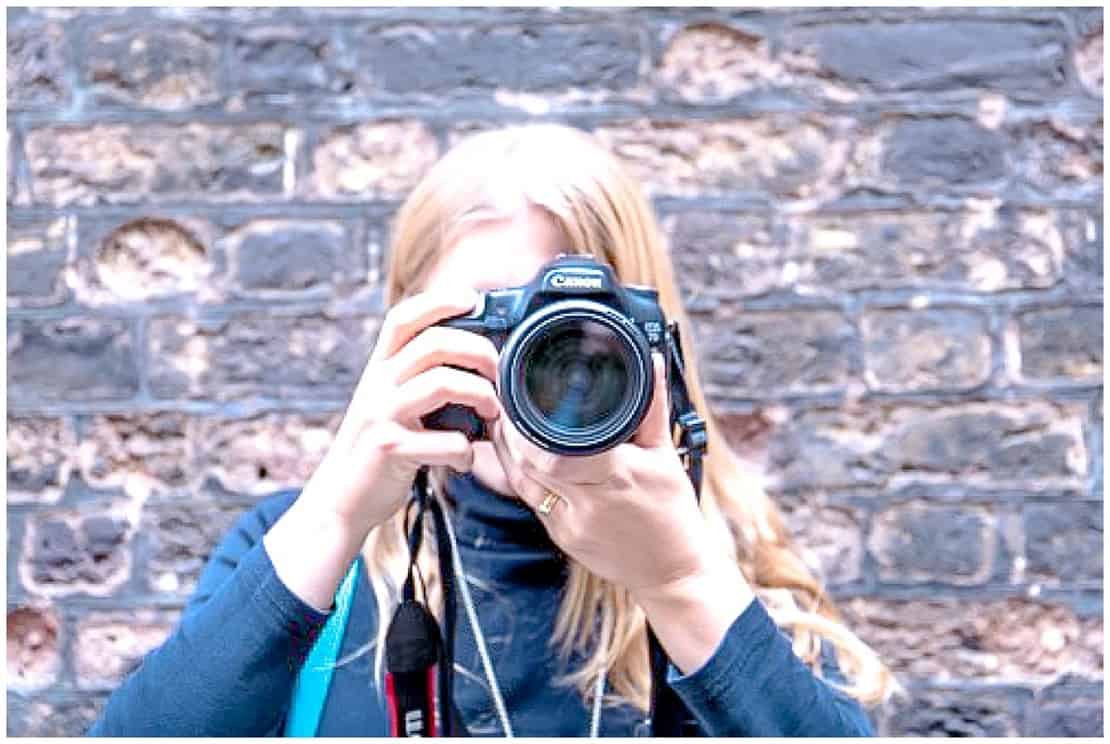
Photography: Capturing the Moment
If you’re not into drawing or painting, fear not – photography is your friend! Consider printing small photos and sticking them in your journal alongside your written reflections. You can also use a Polaroid camera for instant gratification (and who doesn’t love the charm of a vintage photo?).
And if that fails? Try Depositphotos stock images to fill in the gaps. I used to spend a lot of money buying photo books from destinations – and lugging them around – but it’s worth checking out stock sites for specific images you wish you had. There’s no reason not for your travel journal to become a hybrid diary and photo album.
Stickers
Again, stickers are not just for kids. Stickers are a fantastic way to add personality and flair to your travel journal, and they’re easy to find in a variety of places. You can pick up unique stickers from local shops or markets during your travels, which often feature iconic landmarks, cultural symbols, or quirky designs specific to the destination.
For example, while exploring Japan, I found beautifully detailed stickers of Mount Fuji and traditional cherry blossoms at a stationery store in Tokyo. You can also buy themed stickers from craft stores or online marketplaces like Etsy, where independent artists create bespoke designs tailored to travel journaling.
Step 6: Reviewing and Reflecting
OK, so we’ve worked out how to set up your travel journal. But what about this often forgotten but important step?
The Joy of Looking Back
After returning from a trip, take some time to flip through your journal. Let the memories wash over you like the scent of fresh pastries in a Parisian bakery. Basically, have fun reliving your trip!
Reflecting on the Bigger Picture
As you read through your entries, take a step back and consider the overall themes of your journey. What did you learn about yourself? Did you discover new passions or confront fears? Did you develop a deeper understanding of a culture or community? Perhaps you uncovered a newfound love for hiking or a desire to learn a foreign language.
For most of my teens, I thought I hated exercise and the so-called “great outdoors.” It was only through my early twenties and those first travel journals that I realised that I hated school athletics but loved hiking, cycling, and swimming. And the great outdoors was indeed great, once I had the right kit to wear and shoes that actually fit.
Setting Future Intentions
This is a fancy way of saying – what do you want to next? Use your reflections as a launching pad for future travel. What destinations or experiences do you now crave? Write down a list of places you want to explore next, based on what you discovered about yourself during your last adventure. Maybe you’ve realised you thrive in bustling cities or that you’re happier with your toes in the sand.
Similarly, as I mentioned above, there’s nothing like travel and new destinations to make me think differently about home. Daunting tasks never seem so bad after some time away.
Celebrate Your Journey
Don’t forget to celebrate what you’ve accomplished! You got up, you did stuff, you made things happen. I know it’s not traditionally very British to talk or think like this but your travel journal is a testament to your adventures and spirit of being alive. Treat it like the trophy it is.
Keep the Momentum Going
Finally, commit to keeping your journal alive. Don’t let it gather dust on the shelf (ahem!) Start a new journal for your next adventure or continue to add to the one you’ve just filled. Make it a habit to jot down thoughts and experiences regularly, even when you’re not travelling. Everyday life is full of little adventures, and recording those moments can provide perspective and joy. It doesn’t have to be a daily travel diary. But having your own travel journal can help you enjoy your travel – and home – experiences all the more.
So, grab that trusty pen, take a moment to reflect, and let your travel journal be the mirror that reflects your progress through this crazy journey called life. And here, the cheese endeth.
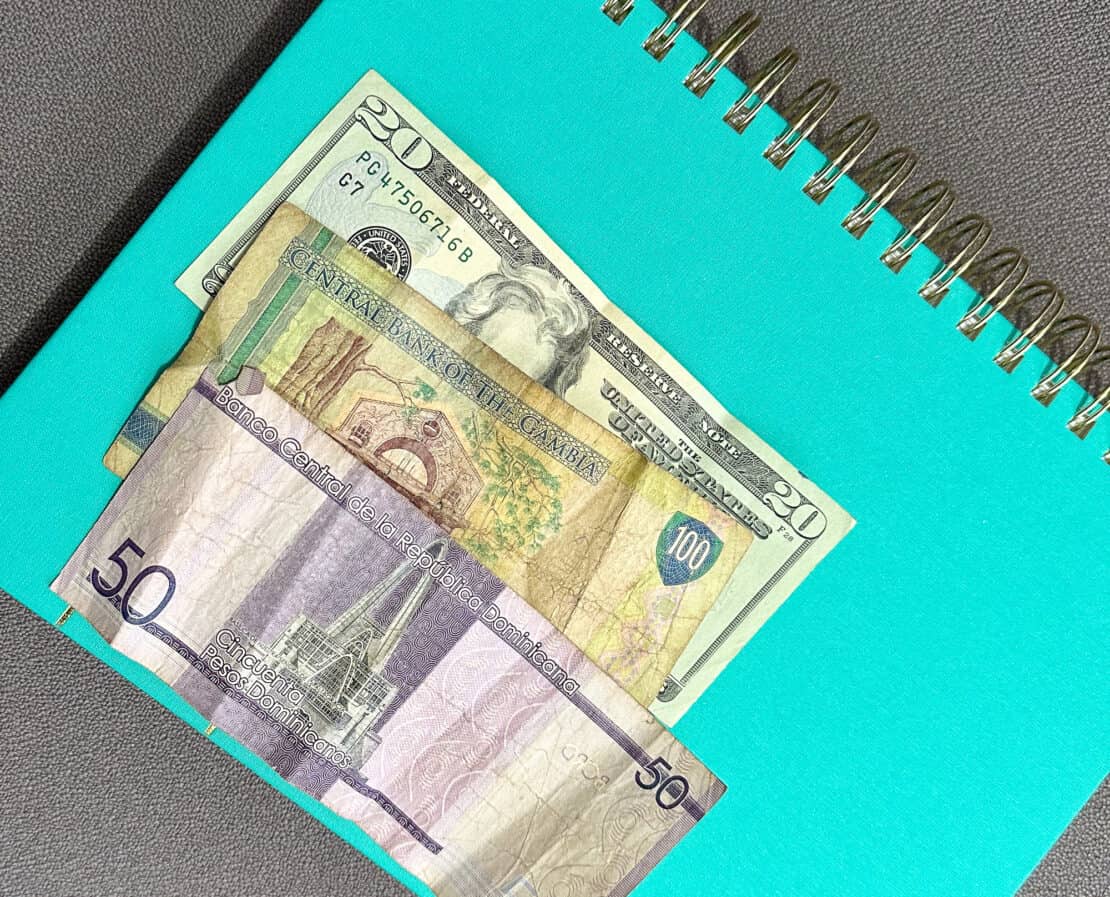
Travel Journal Kit Essentials
Here’s a handy bullet point list to help you pack the perfect travel journal kit for your adventures:
- Journal: Choose a sturdy notebook with your preferred size, layout, and design. Make sure the paper doesn’t bleed.
- Pens: Bring a selection of reliable pens in various colours for writing and doodling.
- Pencil and Eraser: Perfect for sketching and jotting down notes without the fear of mistakes.
- Glue Stick/ Pritt Stick or Double-Sided Tape: Essential for pasting in photos, tickets, and other memorabilia.
- Scissors: A small pair for cutting out items you want to include in your journal.
- Washi Tape or Decorative Tape: Great for embellishing pages and securing loose items.
- Stickers: Fun stickers for decoration and to highlight important moments.
- Camera or Smartphone: For capturing photos of your adventures to include later. As if you’d forget 😉
- Portable Photo Printer: If you want to print photos on the go for your journal.
- Paper Clips or Binder Clips: Useful for keeping loose pages and items organised.
- Sketching Supplies: Coloured pencils or markers for doodling and adding artistic flair.
- Index Cards or Sticky Notes: Perfect for jotting down quick thoughts or reminders.
- Ziploc Bags or Small Pouches: To keep small items like tickets or postcards safe and dry.
- Travel-Sized Handbook or Guide: If you want to reference local tips or phrases while on the go.
- Inspiration Cards or Prompts: A few cards with prompts to spark your creativity when you’re feeling stuck.
- Portable Charger: To keep your devices charged for taking photos or accessing digital resources.
- Watercolours or Mini Watercolour Set: For adding splashes of colour to your pages if you have the artistic abilities
- Paintbrushes: A small, portable brush for watercolours.
- Folding Clipboard: For a hard writing surface while on the move.
Pack these essentials into a compact bag or pouch, and you’ll be all set to document your adventures in style!
And there you have it – your ultimate guide to setting up a travel journal that captures not just the sights you see but also the heart and soul of your adventures.
Looking for travel journal prompts? Check out our article on creative travel journal ideas here.
